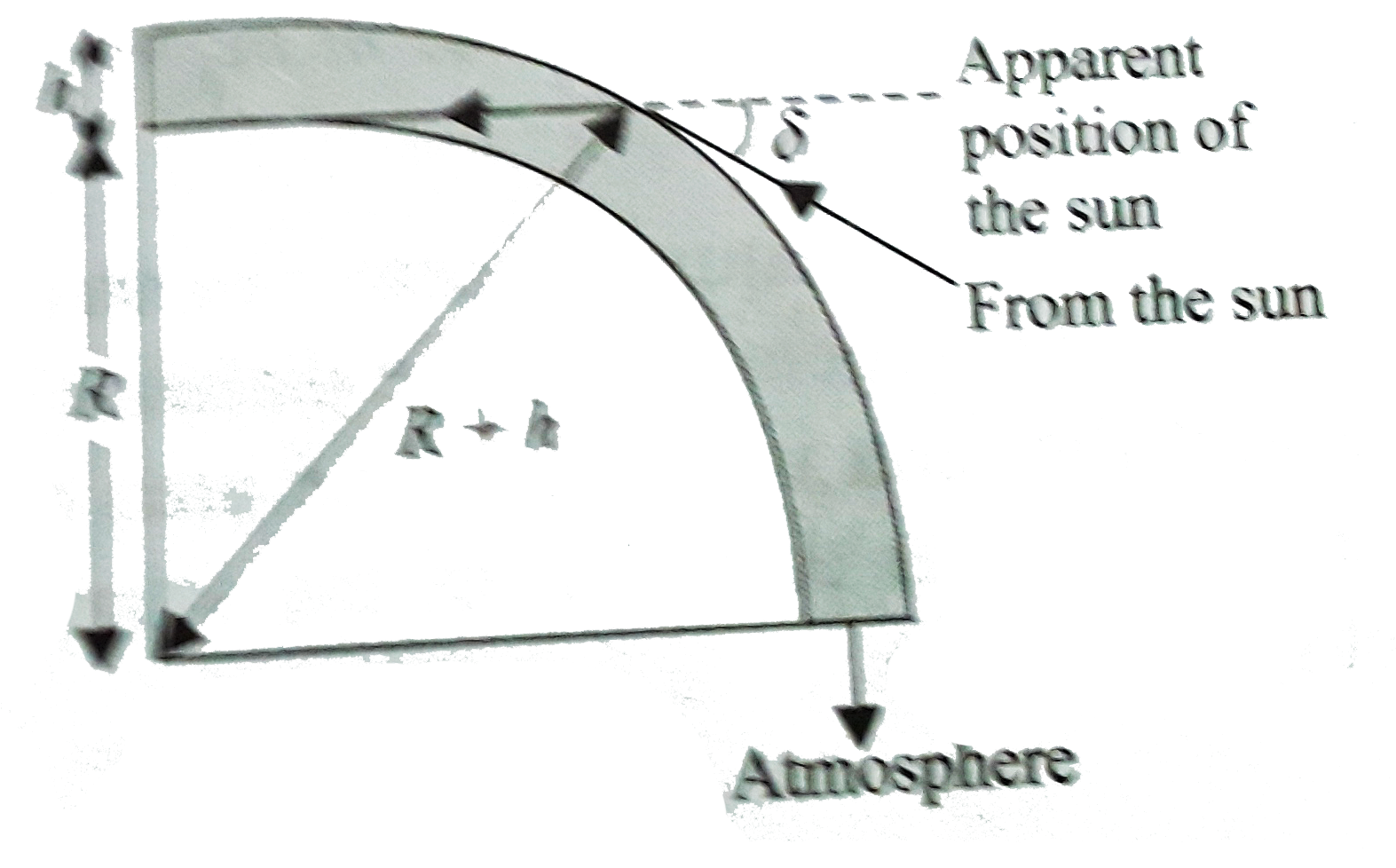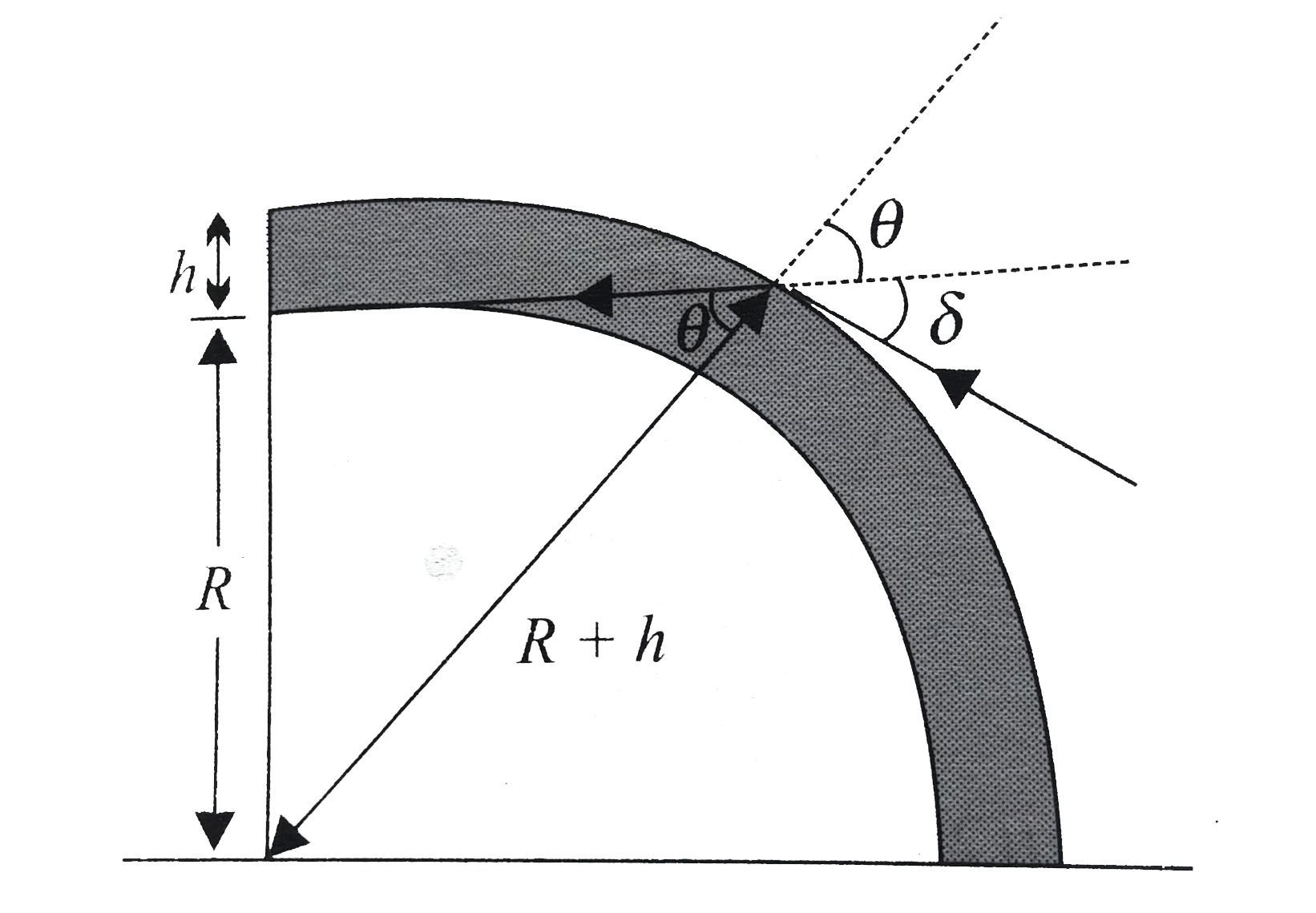When the sun is either rising or setting and appears to be just in the horizon, it is in fact below the horizon. The explanation for this seeming paradox is that light from the sun bends slightly when entering the earth's atmosphere as shown in figure. Assume that the atmosphere has uniform density and hence uniform index of refraction n and extends to a height h above the earth's surface, at which point is abruptly stop. The angle δ above the Sun's true position is given by

sin−1(nRR+h)
sin−1(RR+h)
sin−1(nRR+h)+sin−1(RR+h)
sin−1(nRR+h)−sin−1(RR+h)
The correct Answer is:d.
By snell's law
sin(θ+δ)sinθ=n
sinθ=R(R+h)
sin(θ+δ)=nR(R+h)
δ=sin−1(nRR+h)−sin−1(RR+h)

Topper's Solved these Questions
- BOOK - CENGAGE PHYSICSCHAPTER - GEOMETRICAL OPTICSEXERCISE - Assertion-Reasoninig2videos
GEOMETRICAL OPTICS
- BOOK - CENGAGE PHYSICSCHAPTER - GEOMETRICAL OPTICSEXERCISE - Linked Comprehension51videos
GEOMETRICAL OPTICS
- BOOK - CENGAGE PHYSICSCHAPTER - GEOMETRICAL OPTICSEXERCISE - Subjective26videos
GEOMETRICAL OPTICS
- BOOK - CENGAGE PHYSICSCHAPTER - FRICTIONEXERCISE - QUESTION BANK1videos
FRICTION
- BOOK - CENGAGE PHYSICSCHAPTER - GRAVITATIONEXERCISE - Question Bank39videos
GRAVITATION
Similar Questions
When the sun appears to be just on horizon, it is in fact below the horizon. This is because the light from the sun bends when it enters the earth’s atmosphere. Let us assume that atmosphere is uniform and has index of refraction equal to μ. It extends upto a height h(<<R= radius of earth) above the earth’s surface. In absence of atmosphere how late would we see the sunrise compared to what we see now? Take time period of rotation of earth to be T. Calculate this time for following data
R=6400km,μ=1.0003,h=20km,T=24hr.View SolutionDeoes the atmospheric pressure vary with the height above the earth's surface?
View Solution
Knowledge Check
- Question 1 - Select One or More
We can see the Sun even when it is little below the horizon because of
AReflection of lightBRefraction of lightCDispersion of lightDAbsorption of light - Question 2 - Select One
We can see the Sun even when it is little below the horizon because of
Areflection of lightBrefraction of lightCdispersion of lightDabsorption of light - Question 3 - Select One
Ozone layer above earth's atmosphere will not
APrevent infrared radiations from sun reaching earthBPrevent infrared rays reflected from earth from escaping earth's atmosphereCPrevent ultraviolet rays from sunDReflect back radio waves
We can see the Sun even when it is little below the horizon because of
View SolutionThe height from the surface of earth and electron density of D layer of earth's atmosphere are
View SolutionThe temperature of earth's atmosphere increases with height in
View SolutionLight from the sun reaches the earth approximately in
View SolutionAssuming earth to be a sphere of a uniform density, what is the value of gravitational acceleration in mine 100km below the earth's surface (Given R=6400km)
View Solution
